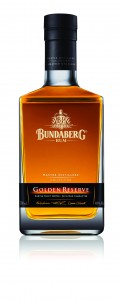On Sunday 1 July winemakers from two neighbouring but very different Victorian regions – Rutherglen and the King Valley – present their wares in Canberra. The annual Taste of two regions will be held at old parliament house between 10am and 5pm, admission $25 per person.
Rutherglen (to the north of the King Valley) spreads along the Victorian side of the Murray River. It’s a hot region famed, historically, for magnificent, luscious fortified wines and thunder-in-the-brain reds, notably durif – a serendipitous cross between syrah and peloursin.
These days it makes a full range of table wines, including somewhat less threatening reds.
In its heyday as a fortified wine producer, Australia’s major winemakers sourced large quantities from the area, which spread across the Murray to Corowa, New South Wales. The Seppelt family operated a winery in Rutherglen township, while Lindemans developed its great fortifieds from the Felton and Southern Cross vineyards across the river.
A little to the south, on the Oxley Plains, Brown Brothers flourished on its fortified wine production, too, but also made high quality reds. Their later search for more elegant modern styles opened up the southern, cooler end of the King Valley to grape growing.
The valley stretches northwards from the sub-Alpine country around Whitlands, at a chilly 800 metres above sea level, gradually descending and comparatively narrow, before fanning out over the hot Oxley plains around Brown Brothers, Milawa, at around 170 metres.
Growing conditions vary greatly in this thirty kilometre long valley. Varying altitudes, rainfall, latitudes, soils and aspects produce a correspondingly wide spectrum of grape and wine flavours.
The mean January temperature at Milawa in the north is 22 degrees Celsius; in the south at Whitlands it’s just 19 degrees. Grapes ripen in early March at Milawa but not until late April at Whitlands.
In short the area produces everything from thumping big, alcoholic fortifieds and reds, to delicate sparkling and white wines.
While the Valley’s winemaking began in the late nineteenth century, most activity remained at the warmer northern end around Milawa until the 1970s.
Milawa owes its prominence on the winemaking map to Brown Bros whose presence, from 1889, sustained the industry in the region and, ultimately, sparked the southward vineyard expansions into the higher, cooler southern end of the valley.
Growing demand for high quality table wine drove the spread south and upward towards Whitfield, Myrrhee, Whitlands and Cheshunt. Brown Bros led the way, developing its own high altitude Whitlands vineyard and encouraging local landowners to diversify into grapes.
The first independents — Guy Darling and John Leviny — established vines between Moyhu and Whitfield in the higher, cooler northern sector in 1970. Both sold grapes to Brown Brothers. Indeed, older readers may recall Guy Darling’s Whitfield vineyard name – Koombahla — appearing on Brown Bros labels in the late seventies and eighties, before Darling established his own brand.
During the eighties and nineties, other landowners, including several Italian descended tobacco growers, commenced growing grapes, originally to sell to Brown Brothers or other winemakers.
However, during the recession of the early nineties Brown Brothers reduced its grape intake. This shock, grower Arnie Pizzini (Chrismont Wines) once told me, was the catalyst that drove him and other growers to adopt a broader, more independent approach to marketing their product.
During the late nineties, driven partly by the export boom, the numbers of independent growers increased, as did the number converting all or part of their production into branded product.
The late nineties, too, saw the arrival of the large independent makers De Bortoli and Miranda, both Griffith based and both Italian descended.
By this time the Valley had acquired a distinctively Italian flavour as the Corsini, Pizzini, Cavedon, Dal Zotto and other families planted indigenous Italian varietals, including sangiovese, arneis, barbera, marzemino, prosecco, barbera, nebbiolo, dolcetto, primitivo (aka, in California and Australia, zinfandel) and verduzzo.
These joined the usual mix of French and German varieties plus a sprinkling from Spain (tempranillo and verdejo), Russia (saperavi) and France’s little known petit manseng and increasingly popular pinot gris (often marketed under its Italian name, pinot grigio).
This diversity of landscapes, climates, grape varieties, growers and makers means the King Valley gives wine drinkers an exceptional range of taste sensations – subtly different in the case of the mainstream varieties like riesling, chardonnay and shiraz but totally removed from our usual fare when we encounter sangiovese, nebbiolo, barbera, verduzzo, prosecco and the like.
In this instance the principal driver of difference was the Italian connection – the sons and daughters of post-war immigrants.
Copyright © Chris Shanahan 2012
First published 16 May 2012 in The Canberra Times, and online in The Melbourne Age and The Sydney Morning Herald
